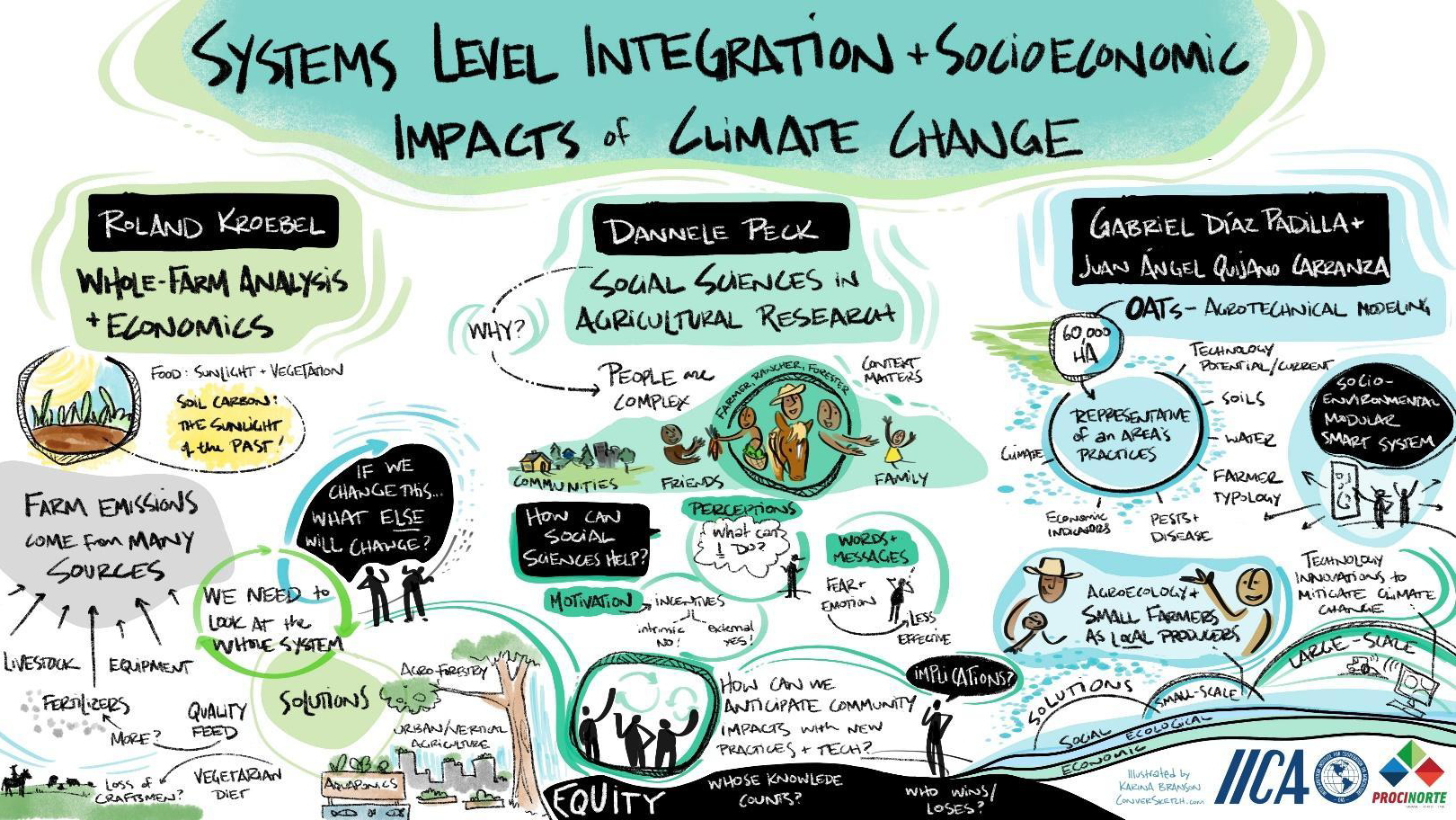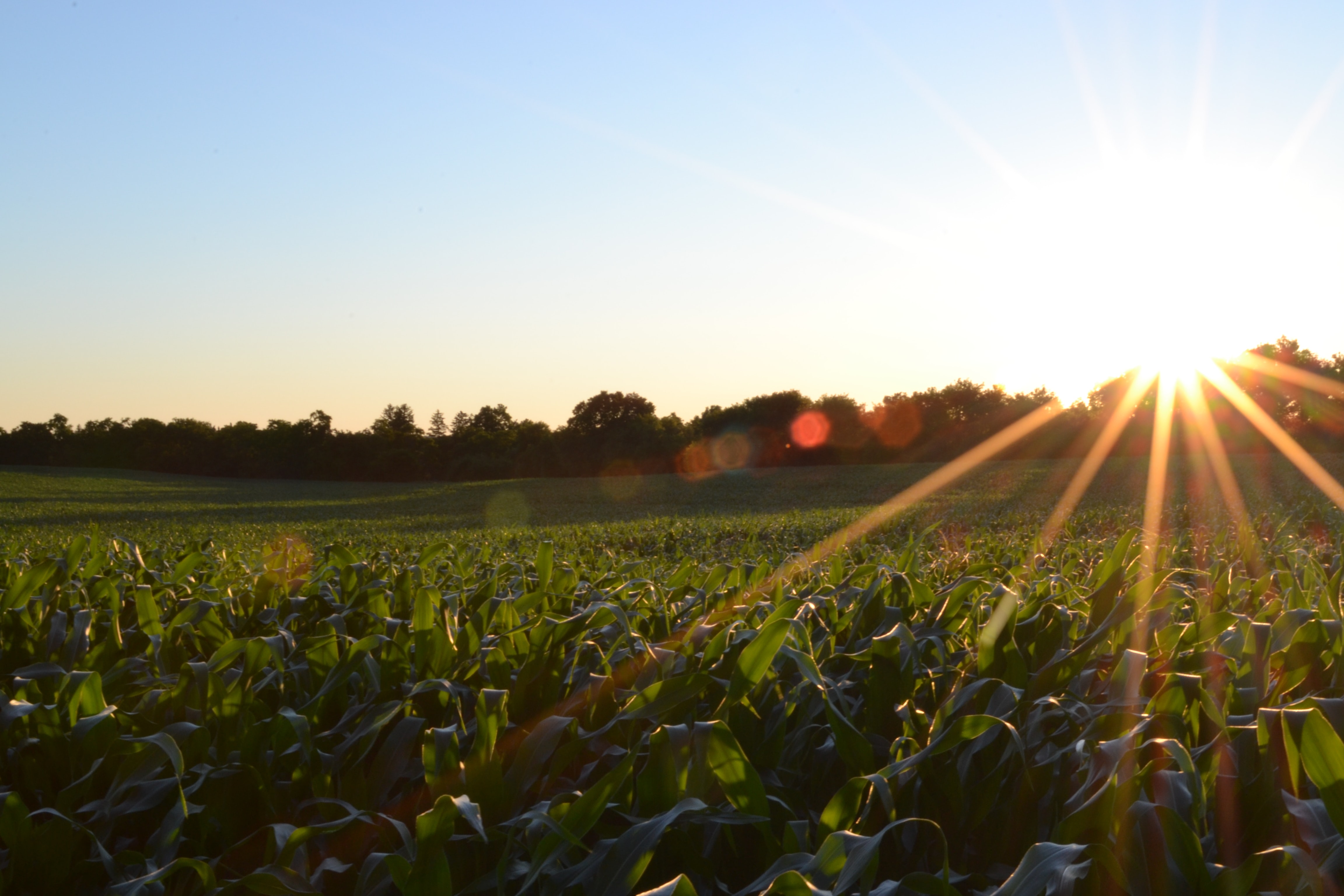
PROCINORTE’s inaugural workshop on Soil, Water, and Climate Change attracted over 60 scientists from Mexico, the U.S., and Canada. Even though the scientific strategies in these disciplines are distinct for each country, many of the challenges faced in these systems are of trilateral relevance and similar across borders. The solutions to climate change on soil, water, crops, and livestock are crucial to North America’s agricultural future.
|
“The solutions to climate change on soil, water, crops, and livestock are crucial to North America’s agricultural future” |
New topics came to light in the April workshop. Researchers across the three countries acknowledged the influence of food system transformation on farm-level decisions and community-level outcomes. On this, social sciences can contribute to a "deeper understanding of the effects of climate change on decision-making in the food system and their dependence and impact on agricultural landscapes and communities," highlighted Dr. Peck.
Social scientists can help the agricultural research community become more aware of equity in climate adaptation, given that climate change increases agriculture vulnerability. Alternative agroecological approaches can also empower farmers, including women, youth, and indigenous peoples, although there are barriers to adopting technology, such as financial and cultural constraints. Farmers often do not read scientific papers and academic publishing takes time. But scientists and farmers should collaborate further to increase adoption. Researchers can participate as observers as they learn how farmers solve problems in different ways. In the U.S., a Peer-to-Peer Program fosters cooperation between farmers and scientists.
Increasing temperatures are impacting soils and soil carbon storage is a vital ecosystem service. Altering the carbon composition in the ground will likely lead to soil erosion and leak dissolved carbon into groundwater. To address this, the scientists agreed on researching the carbon sequestration outcomes of practices. It was recommended to harmonize and simplify metrics when it comes to carbon. Scientists emphasized developing measures that assess products instead of practices, since many different practices deliver the same desired result.
Workshop participants also recognized the challenges in quality, availability, and access to water. There are gaps in our understanding and lack of predictive tools, and countries lack much data. Scientists still do not know where the water recharge is or what the impacts of underground water sources are, and researchers cannot predict or understand pesticide use and soil fertility. To meet these challenges, researchers proposed developing a shared space to share relevant publications, datasets, tools, and funded research to further collaborate, connect and share knowledge, know-how, best practices, lessons learned and solutions.
Scientists need to define the changes in rain and hydrology to communicate the impacts and adaptation strategies. Countries must create syntheses across regions on topics like water retention and flood farmland to increase water recharge and reduce downstream peaks. Long-term collaboration models will be essential to understand the effects of water management, and collaboration can improve water forecasts for farmers and advance water quality, not just water quantity.
|
“Future collaboration between the three countries will focus on improving the yields of intensive food-producing systems, helping small-scale producers be more efficient in food production, reducing environmental footprints, and quantifying the value of protecting nature’s services.” |
Researchers also look to reduce the dependence on synthetic fertilizers, diversify production systems, and find alternatives to current animal feeding strategies to reduce methane emissions. Future collaboration between the three countries will focus on improving the yields of intensive food-producing systems, helping small-scale producers be more efficient in food production, reducing environmental footprints, and quantifying the value of protecting nature’s services.
There are many common obstacles in watershed and land management across the region. There are data gaps and lack of monitoring protocols, not enough technology transfer, few decision tools, scarcity of research on land-use change, missing linkages between forest systems and farming, poor maintenance of climate stations, and not enough engagement between scientists and farmers.
Despite having a set of databases and tools for gathering, accessing, sharing, and analyzing data, each country has different objectives, quality standards, and limitations to improve water and land management. Considering these needs, scientists from North America committed to collaborate on research, tools, and strategies for data acquisition. A trilateral tool dashboard and a joint program for Climate Centers were suggested as first steps.

|
“Overall, in a time of disruption and isolation during COVID, the researchers demonstrated the willingness to collaborate across borders to address climate change and related challenges as agriculture is part of the solution” |
In the end, participants agreed on three main ways to collaborate in the future:
- Primary cross-border research, for instance, collaborating on comparisons and methodologies. To take meaningful action on agriculture and climate change, there is a need for more decision tools, and more climate base models of multiple scenarios to make more informed evidence-based decisions.
- Researchers will leverage existing research efforts and link them across borders. Each country is doing important work and innovation when it comes to climate change; replicating what is working will facilitate each other’s efforts. For example, the U.S. Climate Hub Network develops specific local tools and resources to build climate change adaptation capacity across the country. Replicating this model within North America would increase the ability to mitigate and adapt to climate change faster. Leveraging efforts will include standardizing and integrating data and data sets. All three countries have databases and tools for gathering, accessing, sharing, and analyzing data, but they are distinct in objectives, quality, and limitations.
- Include more stakeholders in climate solutions. Researchers recognized the importance of getting more input from indigenous producers, minority groups, and smallholder farmers.
Overall, in a time of disruption and isolation during COVID, the researchers demonstrated the willingness to collaborate across borders to address climate change and related challenges as agriculture is part of the solution.
Daniela Diaz Lombardo is a professional in the fields of international development and trade. Her focus areas include trade, economic development, agriculture, and sustainability. Born and raised in Mexico, she studied an Honours Degree in International Studies with a specialization in Political Economy at Trinity Western University, in British Columbia, Canada. Currently, she is an intern at the Inter-American Institute of Cooperation in Agriculture (IICA) in Ottawa, Canada.
Nota: Las opiniones expresadas en este blog son responsabilidad de la autora y no reflejan necesariamente la opinión del IICA.
|
Si tiene preguntas o sugerencias de mejora del BlogIICA favor contactar a los editores: Joaquín Arias y Viviana Palmieri. |
Add new comment